September 5
2016 September 05
About seven people attended the monthly Butterfly Walk yesterday. We went out to Island View Beach. We saw several Woodland Skippers and Large Heaths (“Ringlets”) nectaring on Douglas Asters in the grassy fields inland from the beach, and a female Purplish Copper on the sand dunes apparently ovipositing on the Beach Knotweed Polygonum paronychia. And, of course, a few inevitable Cabbage Whites. Finally, a Red Admiral awaited us on our return to Mount Tolmie, for a total of five species – not bad for September. There were lots of tiny micro moths on the sand dunes, one of which was photographed by Aziza Cooper. Not sure what they are – other than a species of crambid moth. Some of the more undisciplined members of the party, (that is to say, all of us) saw a few birds – Common Nighthawk, Wilson’s Snipe, Cedar Waxwing, Merlin, Mourning Dove, and lots of American Pipits. Jeremy Tatum
Here are a few of Aziza’s photographs from the trip.

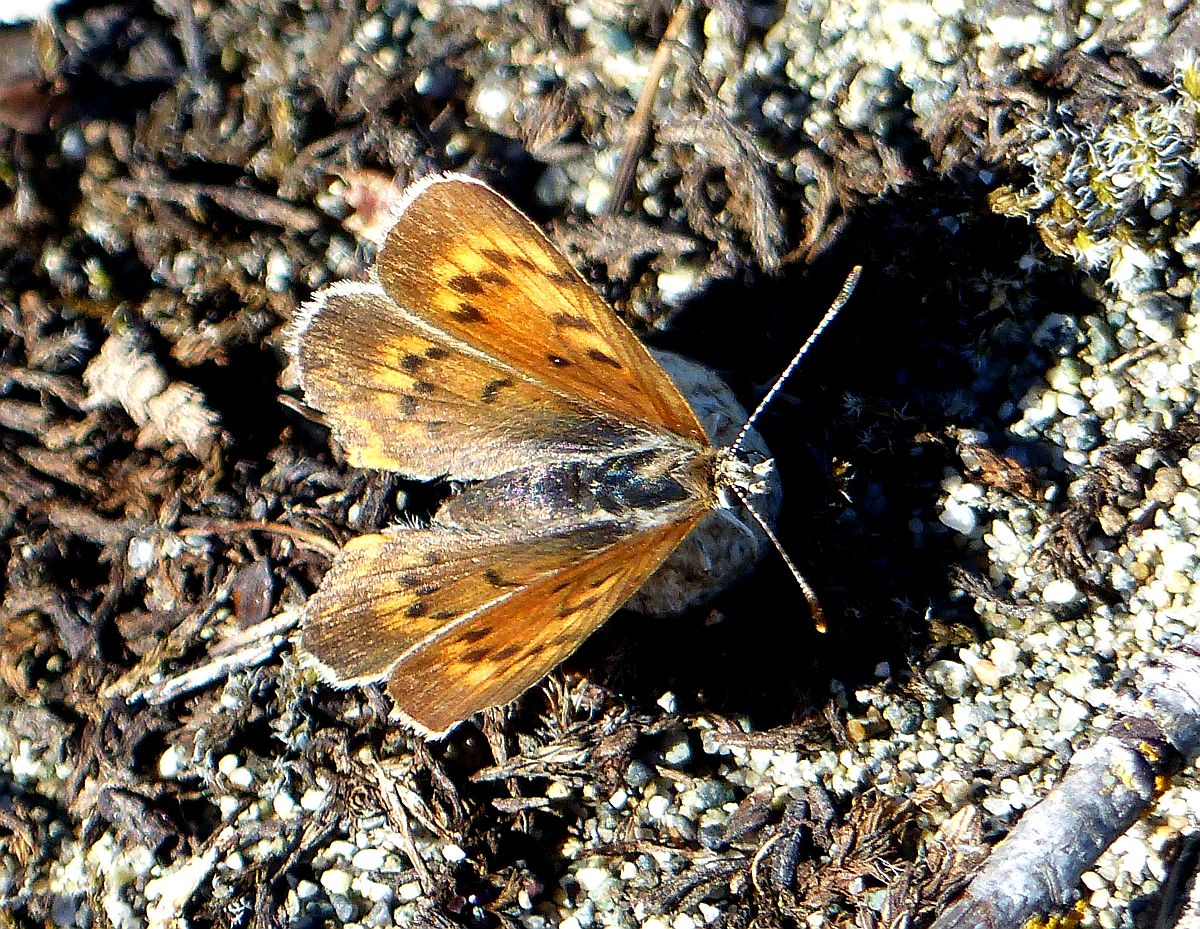
Purplish Copper Lycaena helloides (Lep.: Lycaenidae) Aziza Cooper
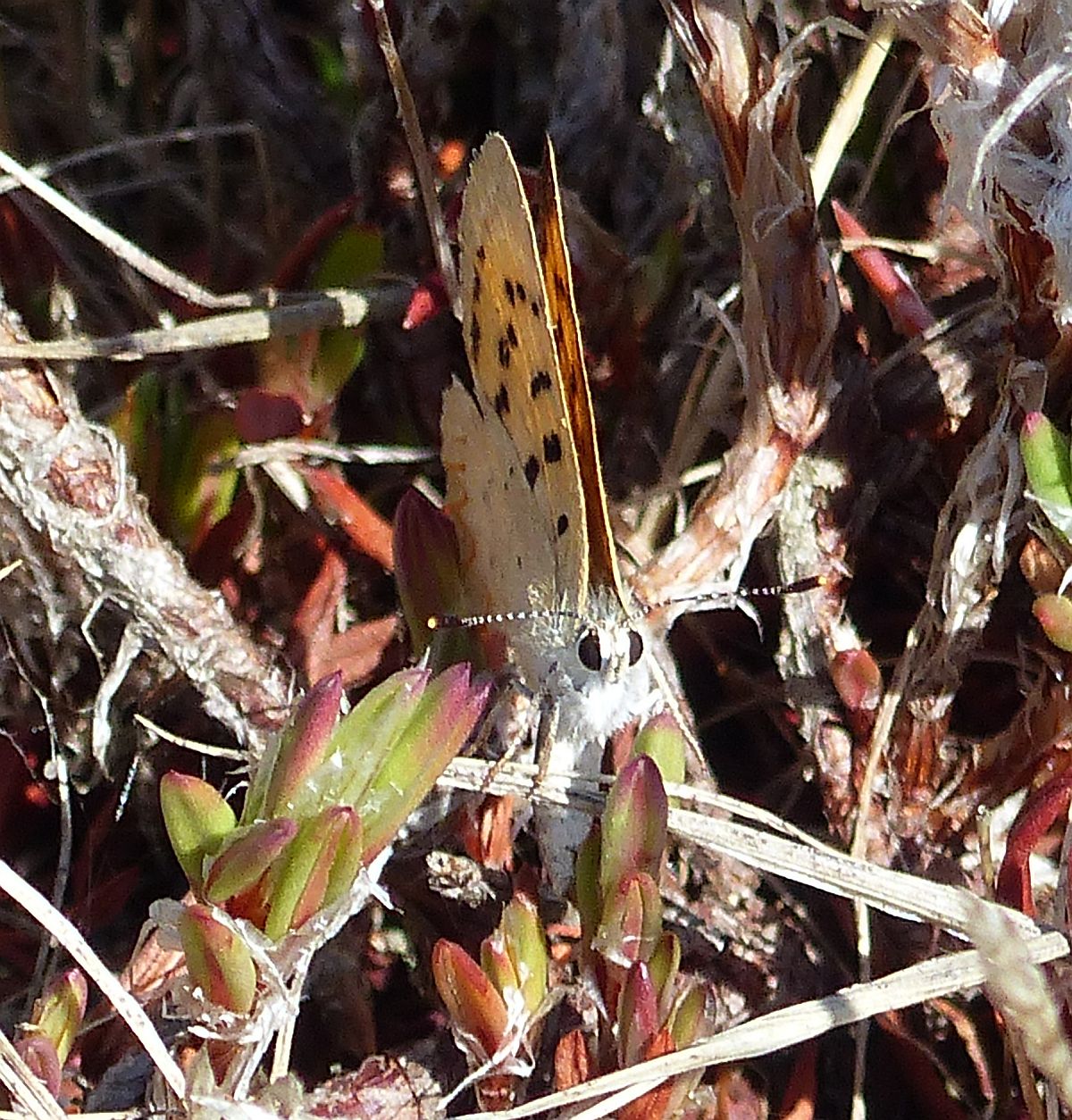
 Purplish Copper Lycaena helloides (Lep.: Lycaenidae) Aziza Cooper
Purplish Copper Lycaena helloides (Lep.: Lycaenidae) Aziza Cooper

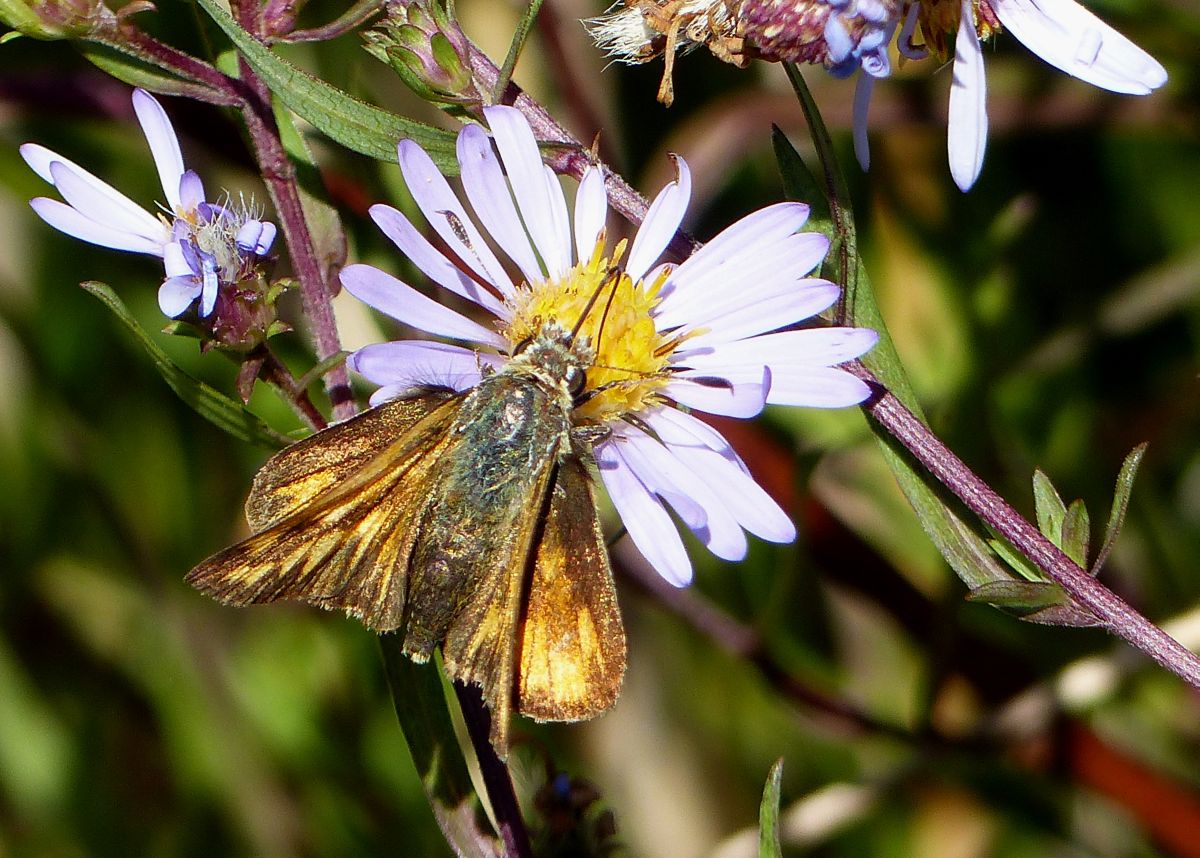
Woodland Skipper Ochlodes sylvanoides (Lep.: Hesperiidae) Aziza Cooper
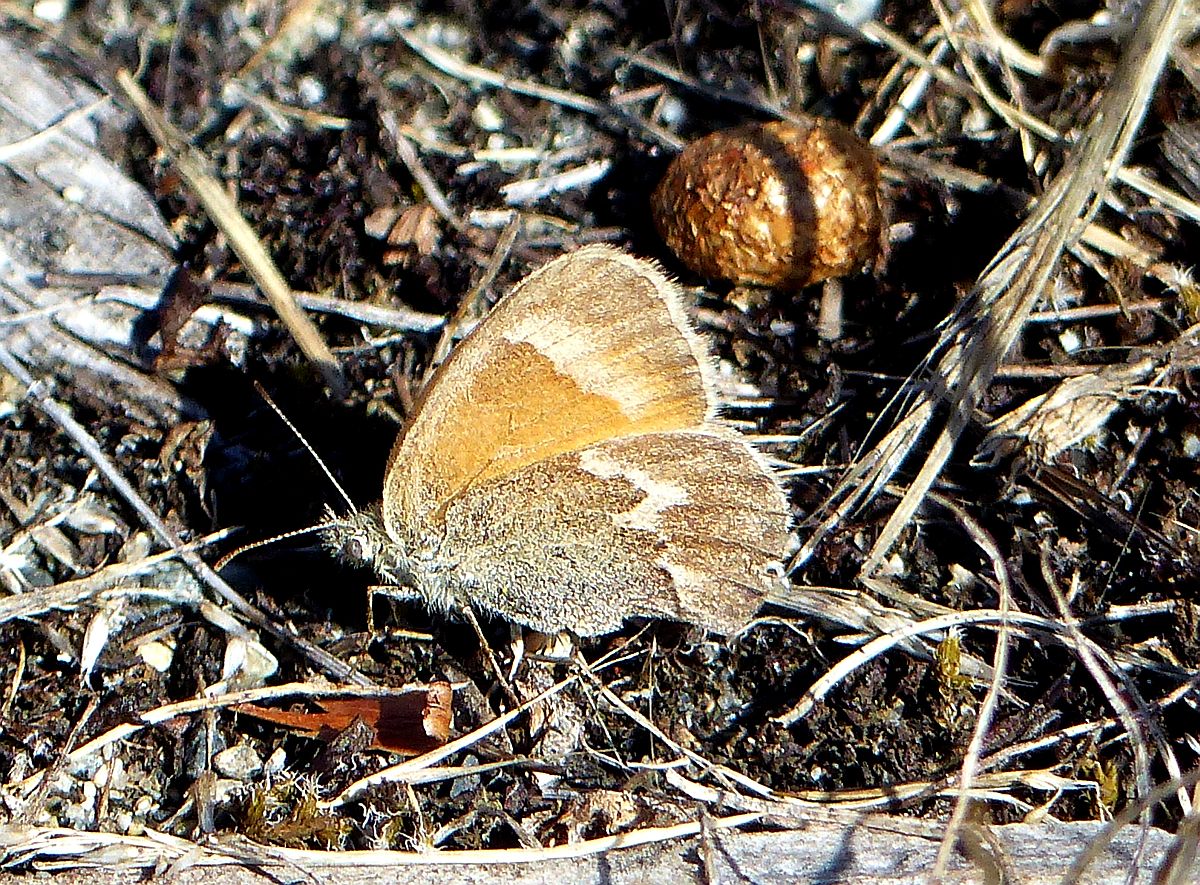
 Large Heath (“Ringlet”) Coenonympha tullia (Lep.: Nymphalidae – Satyrinae)
Large Heath (“Ringlet”) Coenonympha tullia (Lep.: Nymphalidae – Satyrinae) Aziza Cooper
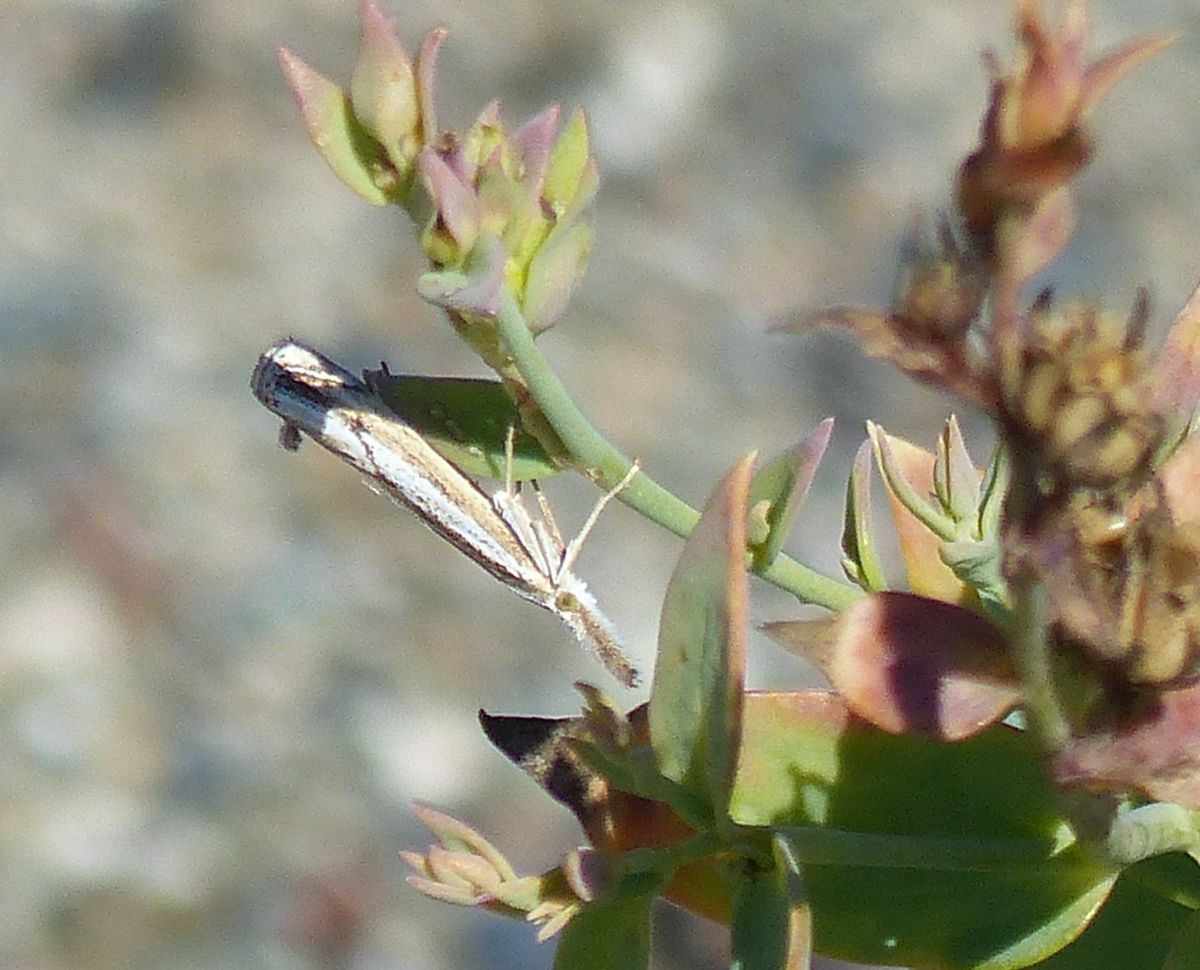
 Micro moth (Lep.: Crambidae) Aziza Cooper
Micro moth (Lep.: Crambidae) Aziza Cooper
Meanwhile Annie Pang photographed a potter wasp (to quote Vera Lynn – “don’t know where, don’t know when”!), identified by Matthias Buck.

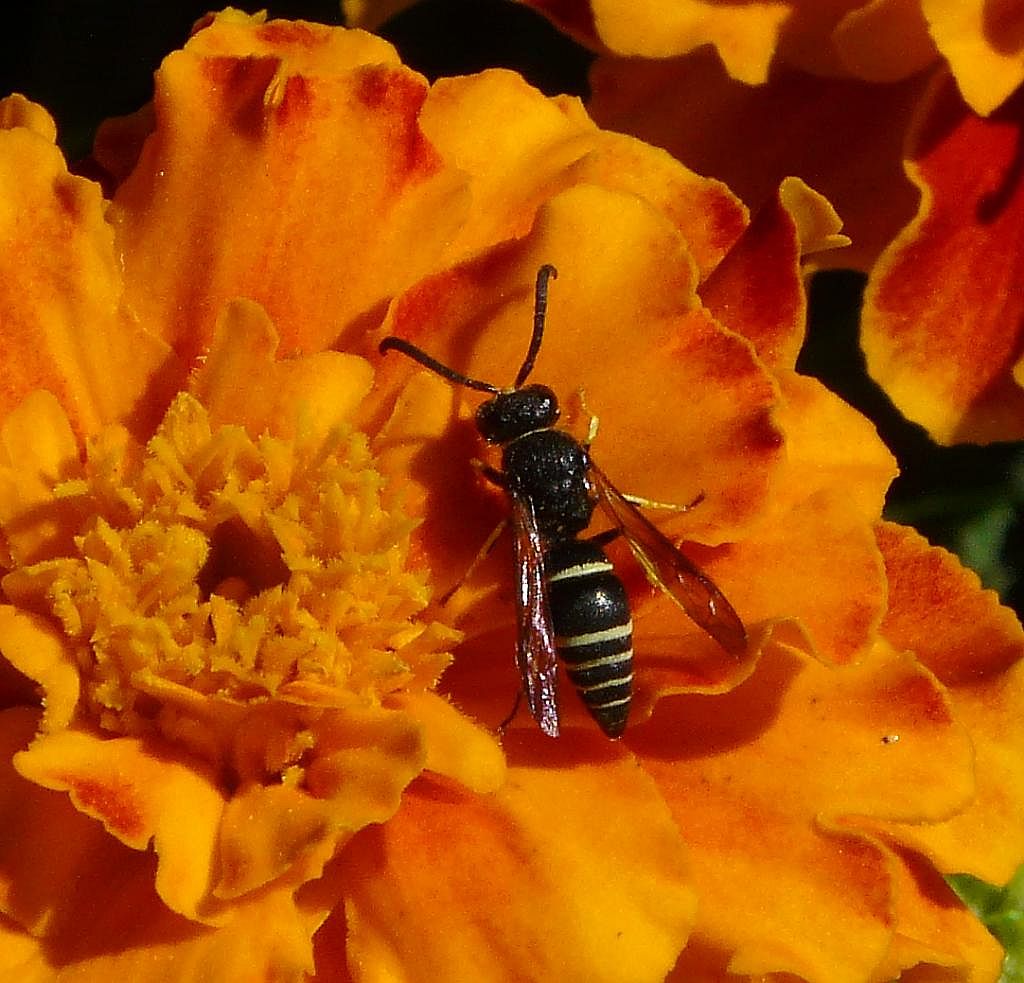
Male Ancistrocerus (probably albophaleratus) (Hym.: Vespidae – Eumeninae)
Annie Pang
Jeremy Tatum writes: I have been asked what were the 26 species of butterfly that I saw in a small area of Sussex, England, in two days in August! Well, that doesn’t strictly belong in this Vancouver Island site, but, to satisfy the curious, here they are:
Small Skipper Small Copper Peacock
Essex Skipper Small Blue Comma
Silver-spotted Skipper Brown Argus Dark Green Fritillary
Large Skipper Common Blue Speckled Wood
Clouded Yellow Chalkhill Blue Wall Brown
Brimstone Holly Blue Gatekeeper
Large White Red Admiral Meadow Brown
Small White Painted Lady Small Heath
Green-veined White Small Tortoiseshell
September 4
2016 September 3, morning
Monthly butterfly walk, Sunday September 4. All welcome. Meet at the top of Mount Tolmie, 1:00 p.m.
Rosemary Jorna writes that the moth below was resting on the duff in her Kemp Lake garden yesterday morning. It is a Large Yellow Underwing moth, a European species by now well established here. The shape is quite characteristic. Although the pattern and colour on the wings is very variable, and this is an extreme pale version, one can usually recognize the species by the double black spot near the apex – a feature that is very obvious in this example.

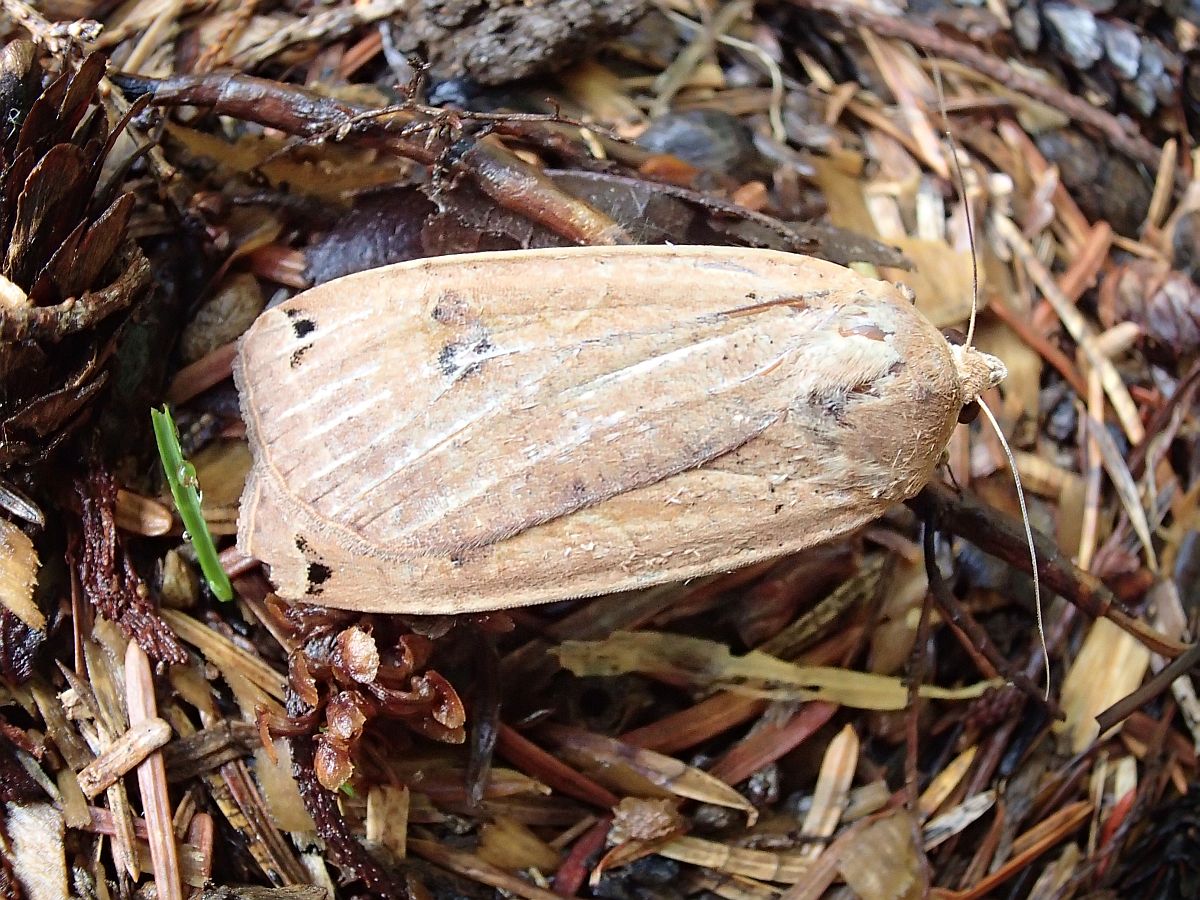
Large Yellow Underwing Noctua pronuba (Lep.: Noctuidae) Rosemary Jorna
September 2
2016 September 2
Annie Pang sends a photograph of a hover fly (Syrphidae). Many hover flies (also known as flower flies) are boldly and, one would think distinctively, marked, and one would think they would be easy to identify. Unfortunately most specialists agree that they are not as easy to identify from photographs as one would think, and it is probably best to leave this one, beautifully marked as it is, as just a syrphid.

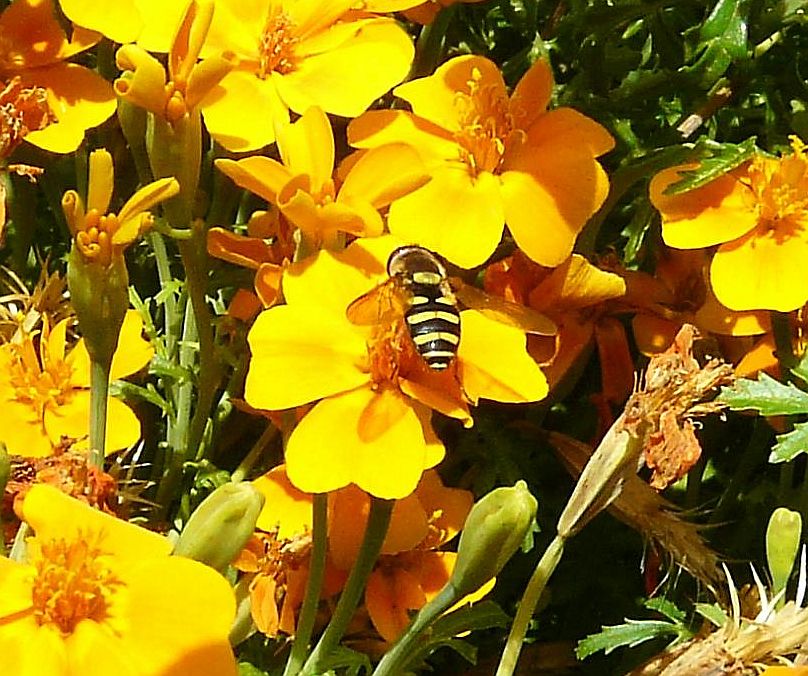
Hover fly (Dip.: Syrphidae) Annie Pang
On the August 29 posting, we mentioned a sighting on August 24 by Aziza Cooper, at Turkey Head, of a sulphur butterfly. Some may wonder – as I did at first – how good a sighting it was. In fact Aziza had a good close look, supplied excellent field notes, and took a photograph. The photograph is probably not an award-winner, and probably wouldn’t reproduce well on this site, but we can confidently assure viewers that it really was a sulphur, and consequently we should be looking out for them right now! Good luck!
August 29
2016 August 29
Colias alert! On August 24, Aziza Cooper saw a sulphur (exact species undetermined) on Gumweed at Turkey Head.
Jeff Gaskin reports a Western Tiger Swallowtail on Mount Tolmie, August 11, and, on August 12, also on Mount Tolmie, 1 Red Admiral, 1 West Coast Lady, and 1 Painted Lady.
Annie Pang found a spider weaving a web on the side-view mirror of her car on August 24. Thanks to Robb Bennett for confirming its identification as Araneus diadematus
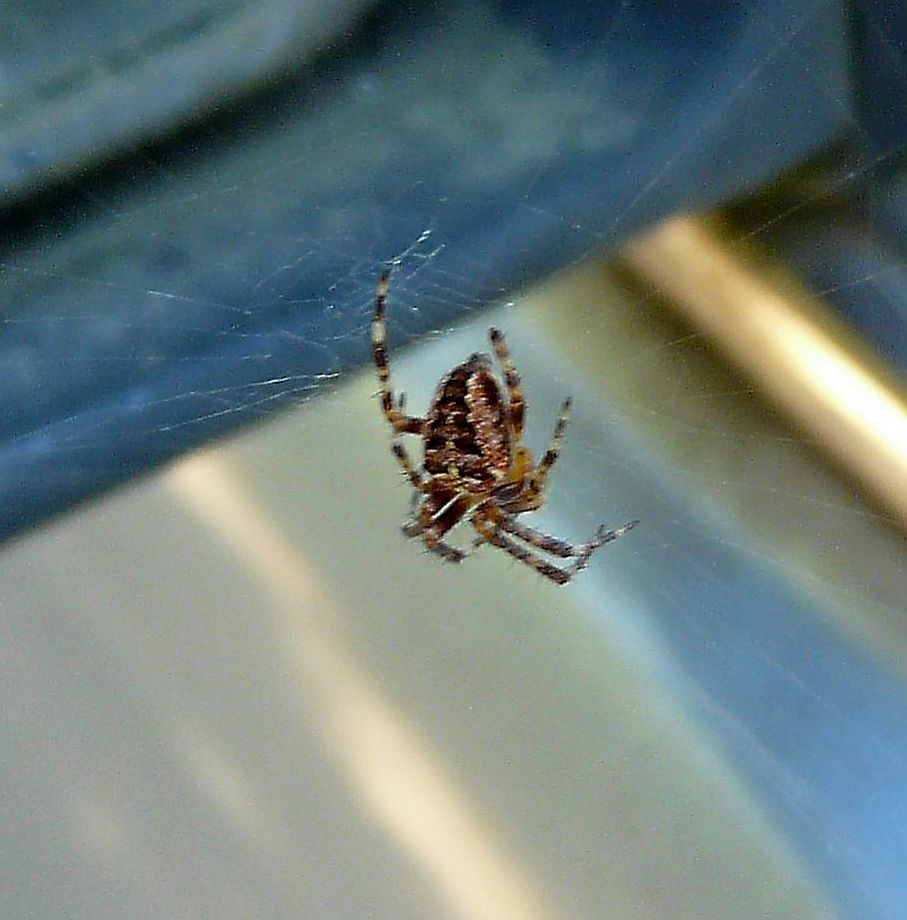
 Araneus diadematus (Ara.: Araneidae) Annie Pang
Araneus diadematus (Ara.: Araneidae) Annie Pang
Aziza Copper photographed the micro moth shown below near the Garcia reservoir on August 26. Thanks to Libby Avis for identifying it as the Alfalfa Webworm Moth Loxostege cereralis.
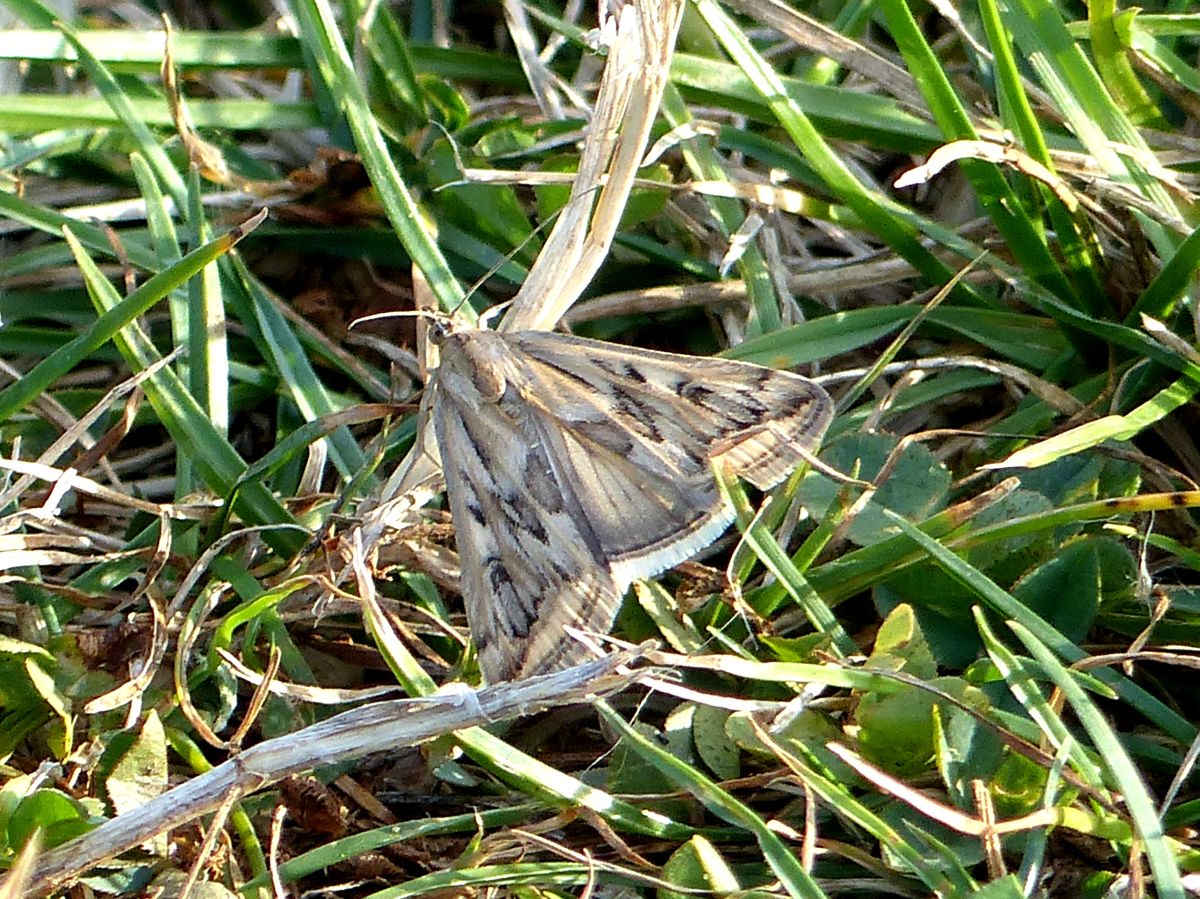
 Alfalfa Webworm Moth Loxostege cereralis (Lep.: Crambidae) Aziza Cooper
Alfalfa Webworm Moth Loxostege cereralis (Lep.: Crambidae) Aziza Cooper
The name cereralis immediately raises a spelling question. Surely this is a misspelling for cerealis – a spelling that is sometimes seen in the literature. The definitive way to determine the correct spelling is supposed to be to go back to the original scientific description, and see what spelling the author used. This is often easier said than done, and I didn’t manage to do it for this moth. However, I found enough to convince myself that the cereralis spelling is the correct, or at least the preferred, spelling. It is not named after what you eat for breakfast. Rather, it is named for Ceres (genitive Cereris), the Goddess of Agriculture.
Thanks to Claudia Copley for identifying some recent photographs of grasshoppers and bush-crickets (katydids) that have been sent to Invertebrate Alert. The first was photographed recently by Paige Erickson-McGee. Claudia writes that it is Melanoplus sp., and probably M. femurrubrum, the very common Red-legged Grasshopper.
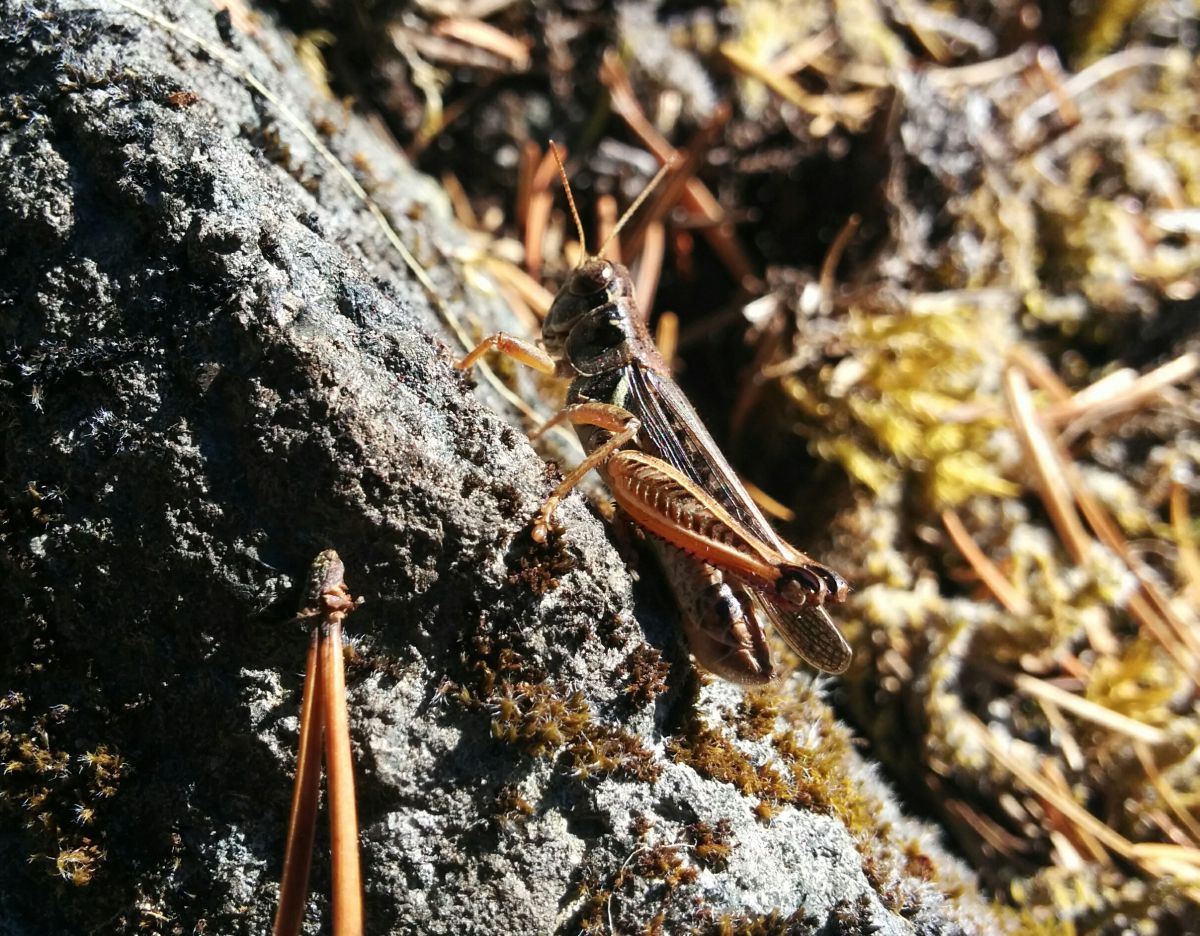
 Melanoplus (probably femurrubrum) (Orth.: Acrididae) Paige Erickson-McGee
Melanoplus (probably femurrubrum) (Orth.: Acrididae) Paige Erickson-McGee
Next is Meconema thalassinum, a bush-cricket, photographed by Cheryl Hoyle in Saanich on August 27. Claudia remarks that this is non-native, and a very recent invader.
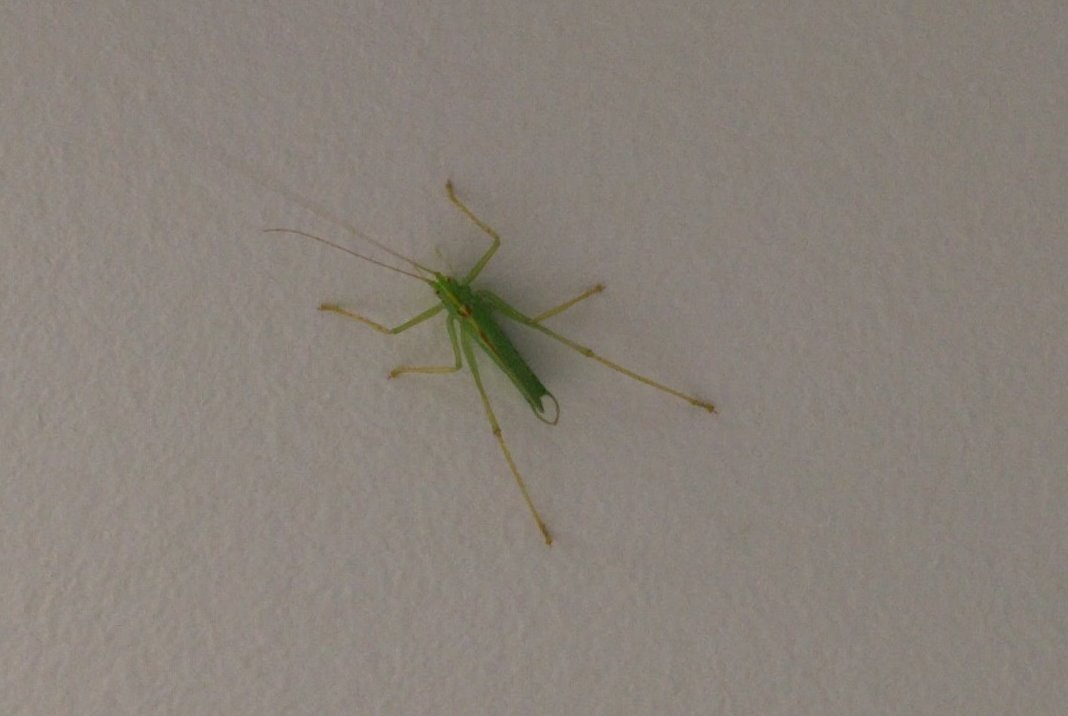
Drumming Katydid Meconema thalassinum (Orth.: Tettigoniidae) Cheryl Hoyle
Claudia has also identified Cheryl Hoyle’s grasshopper posted on August 5. Scroll down to that date to see the photograph and the identification.
